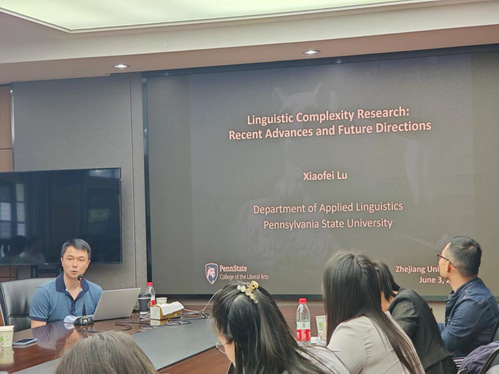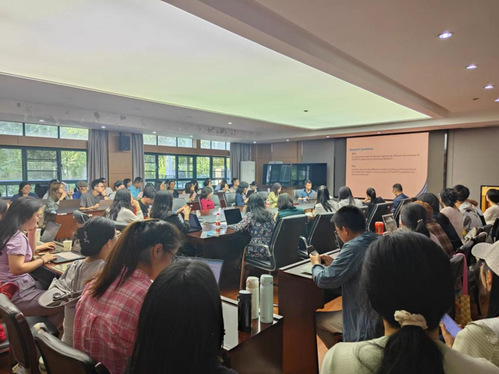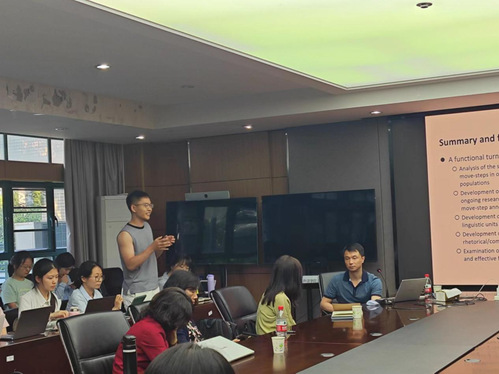On the afternoon of June 3, one of the series of academic lectures by the Language Development and Assessment Research Center of the School of International Studies at Zhejiang University was held as scheduled at Rm. 201 of East Building 5. Prof. LU Xiaofei from the Department of Applied Linguistics at Pennsylvania State University delivered a lecture titled “Linguistic Complexity Research: Recent Advances and Future Directions” which was moderated by Prof. WANG Min from the School of International Studies.

Prof. LU first clarified the concepts and classifications of linguistic complexity. He pointed out that linguistic complexity is divided into two levels: absolute complexity and relative complexity. From the perspective of formal measurement indicators, it is further divided into morphological complexity, lexical complexity, syntactic complexity, and discourse complexity, and he listed automated tools for measuring linguistic complexity indicators at different levels.
Prof. LU then reviewed the status quo of research on linguistic complexity, pointing out that most studies focus on form-based measurement indicators, and mostly on written texts as research subjects. The research is mainly about the relationships between linguistic complexity and text readability, learner factors, task factors, and output quality, as well as examining the characteristics of specific registers with linguistic complexity indicators.

Prof. LU also introduced the in-depth exploration and achievements of his team in the field of linguistic complexity, including the automated analysis of L2 oral production and R&D of related tools, the feasibility study of building large language models to automatically process non-fluent L2 oral speech, research on the linguistic complexity of L2 output in other languages (such as Chinese as a second language) and the development of related measurement tools, as well as diachronic and pedagogical studies of linguistic complexity.
Finally, Prof. LU provided a systematic summary of his team’s explorations in various directions of linguistic complexity and offered suggestions for future research. He emphasized that linguistic complexity research should focus more on the automated measurement of L2 oral texts and the fine-grained development of measurement dimensions. In addition to English, it is necessary to examine the linguistic complexity of other second languages, exploring the universality of cross-linguistic complexity and the complexity characteristics of specific languages. Attention should also be given to the diachronic development and changes in linguistic complexity, in particular, its function and significance from an educational perspective.

The entire lecture was rich in content and presented in an accessible manner, sparking heated discussions. During the Q&A session, participants eagerly raised questions, and Prof. LU answered in a patient and thorough manner. Topics addressed included the practical significance of text analysis in the age of AI-assisted writing, the validity of diachronic research hypotheses, the integration of linguistic complexity and introductory studies, and the importance of interdisciplinary collaboration in the face of declining interest in foreign language majors. The engaging interactions fostered a lively exchange of ideas. The lecture concluded successfully amidst a vibrant atmosphere of exchange and inquiry.
Photos/Text: LI Chengxin
Institute of Linguistics and Applied Linguistics, Zhejiang University
Language Development and Assessment Research Center, Zhejiang University
Translated by JI Yan, proofread by XU Xueying



